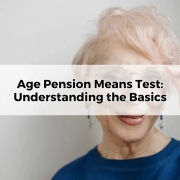How to use your superannuation to pay for aged care
Table of Contents
ToggleThe cost of aged care in Australia is rising, and many people are looking for ways to fund their care without having to sell their home or rely on government assistance. One option is to use your superannuation.
Superannuation is a retirement savings scheme that is compulsory for all working Australians. It’s designed to provide you with an income in retirement, but it can also be used to pay for aged care.
There are two main ways to use your superannuation to pay for aged care – it’s RAD or DAP:
- Refundable Accommodation Deposit (RAD): A RAD is a lump sum payment that you can make to an aged care facility to secure your place. The RAD is refundable to your estate when you leave the facility.
- Daily Accommodation Payment (DAP): A DAP is a daily fee that you pay to an aged care facility to cover the cost of your accommodation. The DAP is calculated based on your income and assets.
Who is eligible to use their superannuation to pay for aged care?
To be eligible to use your superannuation to pay for aged care, you must:
- Be of pensionable age (66 or over for women and 65 or over for men)
- Have reached your preservation age (the age at which you can start accessing your superannuation)
- Have a superannuation balance of at least $150,000
How to apply to use your superannuation to pay for aged care
To apply to use your superannuation to pay for aged care, you need to complete a Superannuation Release Authority (SRA) form. You can get an SRA form from your superannuation fund or from the Australian Taxation Office (ATO).
Once you have completed the SRA form, you need to send it to your superannuation fund. Your superannuation fund will then review your application and decide whether to release your superannuation to you.
What are the pros and cons of using superannuation to pay for aged care?
Pros:
- Superannuation can be a good way to fund your aged care without having to sell your home or rely on government assistance.
- Superannuation is a tax-effective way to pay for aged care.
- You can use your superannuation to pay for a range of aged care services, including residential aged care, home care and dementia care.
Cons:
- Superannuation is a finite resource. Once you use your superannuation to pay for aged care, it will no longer be available to fund your retirement.
- If you have a low superannuation balance, you may not be able to use it to pay for the full cost of your aged care.
- There are some complex rules and regulations around using superannuation to pay for aged care. It’s important to seek financial advice before making any decisions.
Using superannuation to pay for aged care can be a complex process, but it can also be a good way to fund your care and maintain your independence. If you are considering using your superannuation to pay for aged care, it’s important to seek financial advice to make sure it’s the right decision for you.
Additional tips
- Compare aged care facilities: Once you have decided to use your superannuation to pay for aged care, it’s important to compare different aged care facilities to find one that meets your needs and budget.
- Get legal advice: It’s a good idea to get legal advice before signing any contracts with an aged care facility. This will help you to understand your rights and obligations.
- Keep your records up to date: It’s important to keep your superannuation records up to date. This will help you to track your balance and make sure that you are getting the most out of your superannuation.









